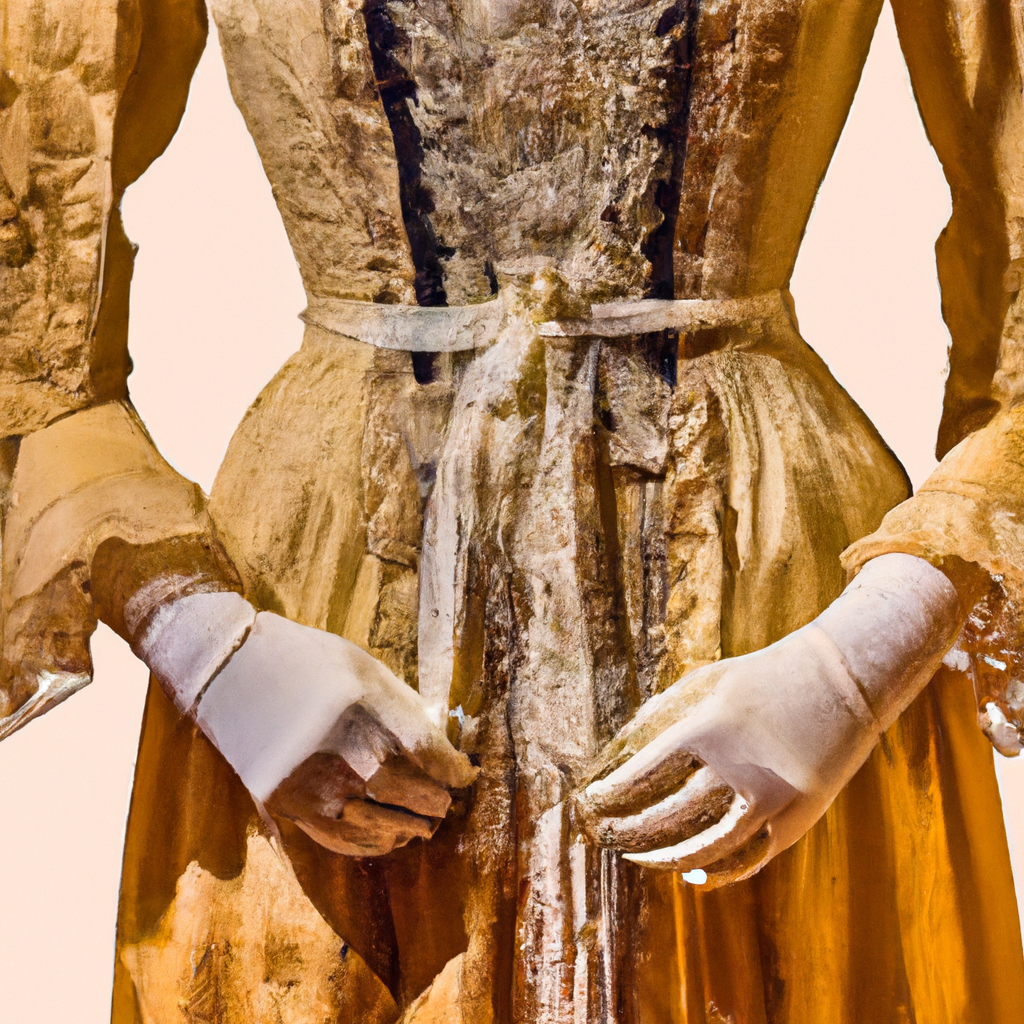From the Ancient Egyptians through the Victorian era to the present day, fashion has been used in myriad ways as an expression of cultural identity. As our history has changed and evolved, so too has our fashion sense: exploring how different garments, colors, and materials resonate with different cultures and occasions. In this article, we investigate fashion and culture in different eras and uncover the influence of historical events on style. With this journey, we discover how fashion has been used to reinforce cultural norms and to respond to changing political and social conditions.
1. The Impact of History on Fashion
Fashion has always been strongly influenced by the cultural, social, and artistic movements of the past. Historical eras have shaped the costumes of participants worldwide, and no one can deny that the way we look at clothing today has been highly affected by the styles of previous generations.
The past has had a strong impact on how we perceive clothing today. For example, ancient civilizations, such as the Egyptians and the Greeks, have left a lasting impression on our wardrobe. Clothing from this time was colorful, ornately decorated, and heavily influenced by ones position in society. We can still see remnants of this aesthetic in today’s fashion, from the elaborate designs of couture fashion to the bright colors on the catwalk.
The Renaissance is another era of history that has had a big impact on fashion. Tailoring was in its infancy during this period, with people favoring intricate patterns and dramatic silhouettes. The majority of clothing was handmade and usually utilized bright colors and luxurious fabrics. Many of the popular styles available today, such as velvet or lace garments, have their roots in the Renaissance.
Other historical eras have also had an impact on how we view and purchase clothing today. The Victorian era was a period of corsets and billowing skirts, while the 1920s saw a move towards shorter hemlines and simpler clothing styles. During the ’60s, people crowed op-art prints and exotic fabrics.
- Ancient Civilizations: colorful and ornately decorated clothing based on ones social position
- Renaissance: tailoring was in its infancy, with intricate patterns and dramatic silhouettes
- Victorian Era: corsets and billowing skirts
- 1920s: shorter hemlines and simpler clothing styles
- 60s: op-art prints and exotic fabrics
History has unquestionably had a profound impact on the fashions of the present day. Clothing styles come and go, but the silhouettes, patterns, and fabrics of the past still influence the fashionable collective.
2. Connecting the Past and Present Through Style
Inspired by nostalgia
The most perfect of fashion looks often take cues from the past. It could be an intricate style from the 1950s, the Art Deco aesthetic of the 1920s or the vibrant colors and prints of the 70s, no matter which decade you draw inspiration from, fashion often finds new ways to reinvent the past.
Retro style with a contemporary twist
Rather than looking old-fashioned or outdated, fusing vintage pieces with modern trends creates a unique style that is sure to get plenty of attention. Think a classic shape reimagined and tweaked slightly for a current look. It’s never a dull affair, finding ways to combine classic silhouettes with today’s trends.
Mix and match
The best part of is the unlimited ways to mix and match pieces from different eras. One of the most obvious examples is pairing modern accessories like a statement bag or scarf with a classic vintage dress. For instance, if you’re going for a ’60s mod-inspired look, combine a mohair cardigan and striped midi with sleek minimalism bangle stacking.
Incorporate timeless pieces
Timeless pieces such as denim jackets and crisp white shirts will never go out of style. Investing in these timeless staples means even if you don’t quite nail the exact trend or era, at least you’ll have the basic components to mix and match and create unique and stylish outfits.
Make it your own
No matter how much inspiration you take from the past, the goal should always be to make it your own. Put together the pieces that you love and feel comfortable and confident in, and let your creativity flow! Here are some ideas:
- Create an unexpected vibe by adding a modern-day touch to a classic look.
- Incorporate timeless staples from different eras into one outfit.
- Experiment with a variety of colors, shapes, and silhouettes.
- Don’t settle for a replica – make it your own!
3. Examining How Politics Shaped Trends
Tracing Causes and Effects
Politics has had a long and deep-seated relationship with the various trends that defined different eras in history. It has often affected the way we think and go about our daily lives, and understanding how our choices have been predetermined by politics can help us find clarity in our own social development.
Climate change was mainly a gathering political storm before it was a looming environmental threat. While we now understand the impact of climate change and the urgency of taking action, history shows that there were waves of early activist policies that attempted to address the changing landscape.
The rise of technology can also be traced back to established political structures. If we look back to the beginning of the Industrial Revolution, we can see how governments began to invest heavily in infrastructure and technological advances in order to keep ahead of the competition. This created an incredible demand for talented professionals and motivated the development of new technologies.
Cultural shifts were also greatly influenced by politics. Issues like racial equality or women’s rights have profoundly affected the way people interacted with each other, even across national borders. In many cases, it was through legislation that these shifts came to exist.
Finally, the impact of politics can also be seen in the world of consumerism. With government agencies pushing for public education campaigns and initiatives meant to improve living standards, people began to seek out new products and services that met their needs, thereby driving the conditions for modern-day consumerism.
4. Historic Events and Their Influence on Society’s Fashion
Fashion is deeply entwined with every society’s history and culture, making it an ever-evolving form of expression. From time immemorial, fashion has played a role in telling stories and been used to represent many things, including past events.
Whether for better or for worse, wars, invasions and natural disasters always have a lasting influence on a culture’s fashion. Wars, for example, have been known to impact the quantity of available materials as well as the styles that people consider fashionable at the time. Invasions, such as the Mongol invasion of China in the 13th century, brought new styles, colors, fabrics and materials that were integrated into the local fashions.
Natural disasters, too, have left a mark on fashion. For instance, the Great Kanto Earthquake in Japan in 1923 led to severe droughts and poor harvests that affected the fabric industry in the region. As a result, ‘Boro’ style clothing came into fashion, which was made out of fabrics that had been widely and repeatedly mended.
Tailoring and production methods have also altered to meet certain demands throughout history, particularly during the Industrial Revolution. This was accompanied by an explosion of fashion trends, many of which were strongly influenced by the technology used in textiles, and the emergence of the first fashion houses and magazines.
From the bright hues of the 1960s counterculture to the recycling of materials and prints of today, historic events have always shaped the popular fashion trends of the time. Whether through necessity or creativity, these moments in history are extremely visible in the styles of the day.
Though styles and trends may come and go, the influence of history on fashion will never truly fade away. By examining the changes in fashion that are steeped in historical events, it is possible to gain insight into how these events have shaped cultures over the years. The next time you pull out your favorite dress from the closet, take a moment to consider how it reflects history’s impact. In so doing, you will uncover an intricate narrative woven from thread and time.




